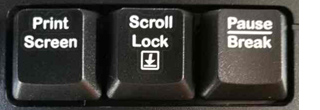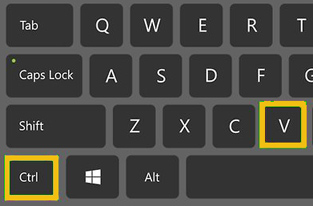
Protecting Intellectual Property
 For artists, authors and other creative professionals, protecting intellectual property may be necessary to protect one's livelihood.
For artists, authors and other creative professionals, protecting intellectual property may be necessary to protect one's livelihood.
Copyright can protect anything that you have wholly created and
considered to be original such as literary works, artworks, designs,
recipes and software. But
Copyright is only a deterrent to entities
that are worthwhile suing. For example an author publishing a
literary work plagiarized from another author will not welcome the
bad publicity, and likewise, a company using another's designs
without their approval could be sued for millions. But
Copyright may
not be a deterrent to a market stall holder who downloads and prints
artworks from the Internet for sale from his stall. Nor might it be
a deterrent to the public downloading and copying videos without
contributing to the cost of their production.
For companies with trade secrets, recipes, formulas or financial
data that needs to be restricted to in-house use only,
Copyright is
not going to be a deterrent at all.
So drastic measures may need to be employed to
copy protect such media.
However there are many techniques that can be used to obtain a copy
such as duplicating the file for redistribution, making a visual
copy using PrintScreen or screen capture software, or screen
recording the whole animated display.
Unfortunately computers were only ever designed to store and display
content. Once in memory or the clipboard, data and media can be
easily moved around, converted to different file types and
distributed by email, file download or on disk. Likewise any media
published on the Internet becomes fair game and easily accessible by
millions of people who believe that it is their privilege to do
whatever they want with it.
In fact before copy protect
solutions were ever available for digital media,
it was proclaimed by those on the technical side of the IT industry
that a) it was impossible to copy protect digital media, and b) why would anyone
bother to copy protect anything?
Well, having been there at the time and wanting
to copy copy protect the works for
my fellow artists, the ones that did not want to give away their
niches for free, I found this pretty daunting. But I also saw it as
a challenge and threw down the gauntlet to every software developer
that I could reach, including those at Netscape and beyond.
Nobody knew where to start or even what could be expected of a
copy protection solution. As an artist I had ideas and researched and
experimented to no end, but found that most programmers lacked the
imagination to see where any idea could lead. That is until I met Tonny Espeset who worked with Java and images to create impressive
image effects. Consequently we gave birth to the first solution to copy
protect images on the Internet and the first
image encryption
software. That was in 1998 and copy protection has come a long way since then. But so have the means of
copying media. While
Secure Image
encrypted images could not be saved, downloaded or
stolen from a server even by your web master, it could be obtained
by PrintScreen. And that is when a plethora of software for screen
capture appeared.
 The PrintScreen button has always been on the keyboard, but not many
knew that by simply pressing that [PrtScn] key that a copy of the
computer screen is saved to the clipboard where it can be retrieved
for use in image editing software. In fact as well as the
PrintScreen key, a copy can also be obtained by simply using Ctrl-C
for copy and Ctrl-V for pasting the copy to anywhere that you
desire.
At the time even among graphic artists working with images every
day, only 1 in 10 knew about PrintScreen. So when screen capture
software became available it was most popular. But it was also most
laughable because the naive public was paying for software that
wasn't needed if one knew about the PrintScreen button.
The PrintScreen button has always been on the keyboard, but not many
knew that by simply pressing that [PrtScn] key that a copy of the
computer screen is saved to the clipboard where it can be retrieved
for use in image editing software. In fact as well as the
PrintScreen key, a copy can also be obtained by simply using Ctrl-C
for copy and Ctrl-V for pasting the copy to anywhere that you
desire.
At the time even among graphic artists working with images every
day, only 1 in 10 knew about PrintScreen. So when screen capture
software became available it was most popular. But it was also most
laughable because the naive public was paying for software that
wasn't needed if one knew about the PrintScreen button.
 Anyway,
to cut a long story short (one that I may revisit one day)
copy protection software
and screen capture software have both evolved.
Copy protect software
has become more sophisticated to cater for the different media and
to stay on top of new and sophisticated copy methods, while screen
capture software has become more sophisticated by smoothing the
transition from copy to final placement into a variety of different
projects. With every new release of Windows comes new opportunities
for copying while at the same limiting what one can do to prevent
it. Of the hundreds of brands of screen capture and recording
software one will find that they all work. But of the scores of
copy protection solutions
that claim to be the "best copy protection" not many live up to
their claims and some don't even come close.
Anyway,
to cut a long story short (one that I may revisit one day)
copy protection software
and screen capture software have both evolved.
Copy protect software
has become more sophisticated to cater for the different media and
to stay on top of new and sophisticated copy methods, while screen
capture software has become more sophisticated by smoothing the
transition from copy to final placement into a variety of different
projects. With every new release of Windows comes new opportunities
for copying while at the same limiting what one can do to prevent
it. Of the hundreds of brands of screen capture and recording
software one will find that they all work. But of the scores of
copy protection solutions
that claim to be the "best copy protection" not many live up to
their claims and some don't even come close.
Author: William Kent
Date: 9th July 2019
Return to DRM and Copy Protection
Comments
| Ken Douglas |
2019-07-20 |
|
I found one site for copy protection that claimed to have a solution for protecting every type of file imaginable, including options for protecting them on web pages. So I signed up for their trial of web page protection and was offered a password protected file. It seems that is all they have on offer for everything.
|
| iCartoon |
2019-07-24 |
|
I could not agree more. When I Googled "image protection" I got pages of results
for site's blogging about the topic but not offering any better suggestions
than watermarking and disabling right-mouse click which is useless. On closer
inspection, they all seem to have copied the same information and reworded it.
The blogs on the first page were mostly web hosting companies and other sprukers
trying to draw attention to themselves. But nowhere did I see any reference to
any secure means of image protection such as CopySafe which are fantastic by the
way! |

 For artists, authors and other creative professionals, protecting intellectual property may be necessary to protect one's livelihood.
For artists, authors and other creative professionals, protecting intellectual property may be necessary to protect one's livelihood.
 The PrintScreen button has always been on the keyboard, but not many
knew that by simply pressing that [PrtScn] key that a copy of the
computer screen is saved to the clipboard where it can be retrieved
for use in image editing software. In fact as well as the
PrintScreen key, a copy can also be obtained by simply using Ctrl-C
for copy and Ctrl-V for pasting the copy to anywhere that you
desire.
At the time even among graphic artists working with images every
day, only 1 in 10 knew about PrintScreen. So when screen capture
software became available it was most popular. But it was also most
laughable because the naive public was paying for software that
wasn't needed if one knew about the PrintScreen button.
The PrintScreen button has always been on the keyboard, but not many
knew that by simply pressing that [PrtScn] key that a copy of the
computer screen is saved to the clipboard where it can be retrieved
for use in image editing software. In fact as well as the
PrintScreen key, a copy can also be obtained by simply using Ctrl-C
for copy and Ctrl-V for pasting the copy to anywhere that you
desire.
At the time even among graphic artists working with images every
day, only 1 in 10 knew about PrintScreen. So when screen capture
software became available it was most popular. But it was also most
laughable because the naive public was paying for software that
wasn't needed if one knew about the PrintScreen button. Anyway,
to cut a long story short (one that I may revisit one day)
copy protection software
and screen capture software have both evolved.
Copy protect software
has become more sophisticated to cater for the different media and
to stay on top of new and sophisticated copy methods, while screen
capture software has become more sophisticated by smoothing the
transition from copy to final placement into a variety of different
projects. With every new release of Windows comes new opportunities
for copying while at the same limiting what one can do to prevent
it. Of the hundreds of brands of screen capture and recording
software one will find that they all work. But of the scores of
copy protection solutions
that claim to be the "best copy protection" not many live up to
their claims and some don't even come close.
Anyway,
to cut a long story short (one that I may revisit one day)
copy protection software
and screen capture software have both evolved.
Copy protect software
has become more sophisticated to cater for the different media and
to stay on top of new and sophisticated copy methods, while screen
capture software has become more sophisticated by smoothing the
transition from copy to final placement into a variety of different
projects. With every new release of Windows comes new opportunities
for copying while at the same limiting what one can do to prevent
it. Of the hundreds of brands of screen capture and recording
software one will find that they all work. But of the scores of
copy protection solutions
that claim to be the "best copy protection" not many live up to
their claims and some don't even come close.